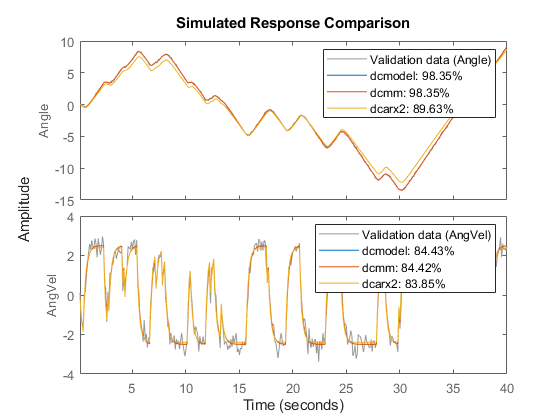线性灰盒模型
如果您了解系统的物理特性,并且可以使用具有未知参数的常微分方程或差分方程 (ODE) 表示系统,则可以使用 System Identification Toolbox™ 命令执行灰盒建模。灰盒模型 ODE 明确指定模型的数学结构,包括参数之间的耦合。当您了解变量之间的关系、模型行为的约束或表示系统动态特性的显式方程时,灰盒建模是很有用的。
您可以使用 idgrey 对象表示线性灰盒模型,这要求您编写一个函数来描述状态空间形式的线性动态特性。有关详细信息,请参阅Estimate Linear Grey-Box Models。
函数
主题
- Linear and Nonlinear Grey-Box Modeling
If you understand the physics of your system, you can estimate linear or nonlinear grey-box models.
- Identifying State-Space Models with Separate Process and Measurement Noise Descriptions
An identified linear model is used to simulate and predict system outputs for given input and noise signals.
- Estimate Linear Grey-Box Models
How to define and estimate linear grey-box models at the command line.
- Estimate Continuous-Time Grey-Box Model for Heat Diffusion
This example shows how to estimate the heat conductivity and the heat-transfer coefficient of a continuous-time grey-box model for a heated-rod system.
- Estimate Discrete-Time Grey-Box Model with Parameterized Disturbance
This example shows how to create a single-input and single-output grey-box model structure when you know the variance of the measurement noise.
- Estimate State-Space Models with Structured Parameterization
Structured parameterization lets you exclude specific parameters from estimation by setting these parameters to specific values.
- Estimate Coefficients of ODEs to Fit Given Solution
Estimate model parameters using linear and nonlinear grey-box modeling.
- Estimate Model Using Zero/Pole/Gain Parameters
This example shows how to estimate a model that is parameterized by poles, zeros, and gains.
